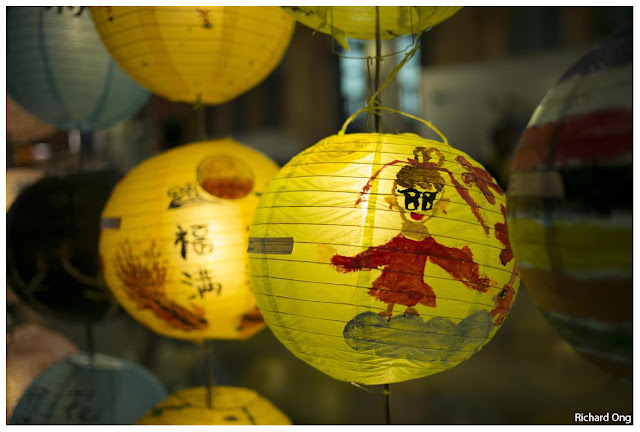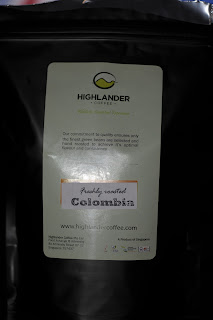OMD EM-1 Short Review
 |
| The OMD EM-1 |
Olympus announced the
OMD EM-5 in February 2012, and it was regarded as one of the best Micro
Four-Thirds (MFT) body at that time. However, less than two years later, the
EM-1 was revealed and released in October/November 2013. Is this camera really
worth the buck – is it a powerful camera in its own rights? We had a few days
with the EM-1 with an Olympus 60mm Macro, and the 12mm F2 to find out.
In reviewing the IQ of the MFT body, I have stepped down my
requirements owing to the fact that it IS a MFT camera – hence I will not be
using the bastion of Leica M series to compare it with. We KNOW that the
bokeh/depth of field of a MFT will never ever beat that of a full-frame and it
is unfortunately, one of the saddest fact of any MFT body.
Aesthetics (6.5/10):
Placed next to my Leica M9P, the EM-1 looks very, very
modern. Olympus chose to forego the vintage look that they had clinched so
perfectly with the EM-5 to add on a DSLR grip to the body. Yes – the camera now
handles ergonomically fantastic but now it looks like an ugly mix of Chinese and
Indian food. In fact, the EM-1 looks more like a DSLR now, especially since the
size of it is not in particularly very small. Held next to the M9, there is
hardly any notable differences except in the weight.
 |
| So, so many buttons... |
Ergonomics (8/10):
The EM-1 handles perfectly and feels very light to the
Leica-enthusiast. It almost feels plastic-like, which is a welcomed change to
the brick-metal weight of the M9. The added rubberized handgrip is perhaps the
best part of the design (which took off all aesthetics) as I was able to handle
almost 90% of my shots with one hand, partly in thanks to the 5-axis IBIS as
well. The EM-1 starts to falter as it gets ambitious – there are way too many
dials and buttons. HDR, AF, on-off, AEL-AFL switch, Live-View switch…. The list
goes on. There are nineteen (19!) buttons (no this is not accurate, I did not
bother to check), 2 switches, and 3 dials on this beast. I mean, seriously? In
contrast, the M9 has only 11 buttons, 1 switch and 2 dials. This many buttons
took away the ergonomics of it – it just shows that the engineers couldn’t be
more innovative enough. Because of this, I took 2 points off the ergo, simply
because I felt the design was lazy.
Image Quality (9.5/10):
Boy, was I impressed with the out-of-camera images from this
little/huge beast. Olympus did the correct choice in removing the AA filter and
upping the sensor IQ as this, honestly, is the only selling point of the OMD at
the moment (we will talk more about it at the conclusion). JPEGs that come
straight of the camera, which can be then directly Wi-Fi to your phone makes it
a luxury for the travelling photographer. These images look fantastic. The
detail is fantastic. The 5-axis IBIS makes it super-easy to capture relatively sharp
shots without much skill.
The RAW files are the real deal though. When I loaded the
images into LightRoom on my 1440p screen, I was shocked. I had expected 16
megapixels to look like crap and I was impressed. I had walked around the supermarket
taking pictures of random stuff and I *did not* expect any of my images to turn
out
good. But I was
pleasantly surprised!
I only had to do
minimal adjustments, such as adding very minimal clarity. The camera captures
white balance correctly 99% of the time, the auto-focus is SPOT-ON perfect ALL
the time.
 |
| Red Apples |
What I really like about the camera however, is the color
rendition. The apples look deliciously red and my aji-tama (tasteful egg) looks
exactly the same as real-life.
Next, I had some fun
with the in-camera HDR composition. I was not very impressed – but neither was
I unhappy. I would say that the HDR does what it does to a limited extent. You
will not expect overly dramatic HDR, and it also really depends on your landscape.
I chose a bad place with the shot below – but hey, I am not a fan of HDRs.
 |
| HDR on Overcast Evening |
Olympus seems to do some kind of sharpening to the pictures.
When cropped to 100%, you could see a grainy texture to the images. I am not in
particular unhappy about that but it should be something to take note of if you
are not one that likes that kind of feel.
Conclusion (7/10):
Olympus has done very well with the EM-1 image quality. I
have not expected such good IQ from a MFT, and I was pleasantly surprised. The
camera also handles ergonomically well if you can forget the ugliness of it,
and the shutter sound is beautifully soft and even cute. There are also many
other features of the EM-1 which was not reviewed (I mean, we do have 20
buttons!) – such as waterproofing, 5-IBIS, and the other multitude of functions
which could sway the potential buyer to getting one. I for one got it for
purely macro photos, and it does that, pretty much perfectly.
Unfortunately, the release of the EM-1 came at a time where
Sony also announced their upcoming A7 and A7r series which is a full-frame
mirrorless in a body that is very similar in size (maybe smaller?) to the OMD. The
OMD is NOT cheap, it is priced at $1399 USD whereas the A7R, which packs 36
megapixels, is priced at only $2399 USD. This differential is very easily
justifiable in my opinion. An informed buyer at this point of time would
hold-off the purchase, and wait for more IQ samples for the A7/r.
The OMD does of course, have a wide-array of lenses that are
fantastic optically at the moment. While Sony currently have crappy lenses for
the A7/A7R, adaptors can serve to augment (we can use leica lenses!) that, and
Sony has announced a very big lineup to support the A series. In addition, with
Sony breaking the barrier of having the smallest FF camera, we can expect other
giants to go into this market and very soon, there will be great lenses
available for FF mirrorless tiny cameras. In fact, we just had the Nikon DF
being announced as well. All this will only cause the OMD value to keep going
downhill and thus it will not make to be a good purchase.
Despite a bad value, the OMD EM-1 by itself is a strangely great
camera. I feel that it does have some kind of elusive charm where I cannot quite
say that it is beautiful but yet has its own mysterious usefulness. In terms of
size, it is huge and does not pack the punch of the new FF-mirrorless, and it
is not small enough like the Panasonic GM, yet it still delivers beautiful,
sharp and colorful pictures.
It is in a nutshell, neither here nor there.
Samples Gallery (some images are cropped):

















































.JPG)





